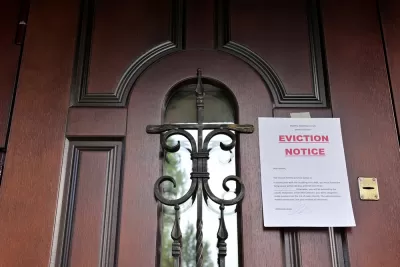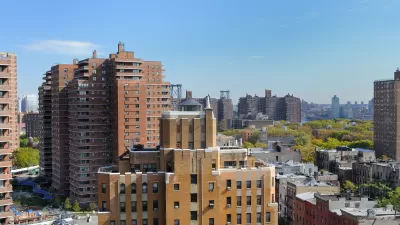Eviction rates are rising as rents and inflation grow around the country and households struggle to keep up with rent payments.

With federal assistance programs drying up and rents continuing to rise in most U.S. cities, more households are facing eviction, reports Shannon Pettypiece for NBC News. “Eviction filings have been on the rise and were above their historical averages in half of the 1,059 counties tracked by Legal Services Corp., a federally-funded legal aid group, during either August or September.”
Experts worry that the wave of evictions expected after pandemic relief ends is about to crest as inflation soars and the country faces an acute housing shortage. “Despite a relatively strong job market and historically low unemployment, nearly 7.8 million Americans said they were behind on their rent in October and 3 million felt they were likely to be evicted in the next two months, according to a census survey the same month.”
Rents nationwide went up by 9 percent in September, with some cities, such as Phoenix, experiencing rent hikes of as much as 24 percent year over year. “With the emergency rental assistance funds running low, the Biden administration is urging states and cities to use other sources of funding, including the remaining money from the Covid stimulus bill passed last year, to continue providing support to renters or to put other protection policies in place, said Gene Sperling, the White House’s coordinator for American Rescue Plan funds.”
FULL STORY: Evictions are piling up across the U.S. as Covid-era protections end and rents climb

Manufactured Crisis: Losing the Nation’s Largest Source of Unsubsidized Affordable Housing
Manufactured housing communities have long been an affordable housing option for millions of people living in the U.S., but that affordability is disappearing rapidly. How did we get here?

Americans May Be Stuck — But Why?
Americans are moving a lot less than they once did, and that is a problem. While Yoni Applebaum, in his highly-publicized article Stuck, gets the reasons badly wrong, it's still important to ask: why are we moving so much less than before?

Using Old Oil and Gas Wells for Green Energy Storage
Penn State researchers have found that repurposing abandoned oil and gas wells for geothermal-assisted compressed-air energy storage can boost efficiency, reduce environmental risks, and support clean energy and job transitions.

Updating LA’s Tree Rules Could Bring More Shade to Underserved Neighborhoods
A new USC study finds that relaxing Los Angeles’ outdated tree planting guidelines could significantly expand urban tree canopy and reduce shade disparities in lower-income neighborhoods, though infrastructure investments are also needed.

California's Canal Solar Projects Aim to Conserve Resources and Expand Clean Energy
California’s Project Nexus has begun generating electricity from solar panels installed over irrigation canals, with researchers and state agencies exploring statewide expansion to conserve water and boost clean energy production.

HHS Staff Cuts Gut Energy Assistance Program
The full staff of a federal program that distributes heating and cooling assistance for low-income families was laid off, jeopardizing the program’s operations.
Urban Design for Planners 1: Software Tools
This six-course series explores essential urban design concepts using open source software and equips planners with the tools they need to participate fully in the urban design process.
Planning for Universal Design
Learn the tools for implementing Universal Design in planning regulations.
Heyer Gruel & Associates PA
City of Moreno Valley
Institute for Housing and Urban Development Studies (IHS)
City of Grandview
Harvard GSD Executive Education
Salt Lake City
NYU Wagner Graduate School of Public Service
City of Cambridge, Maryland





























